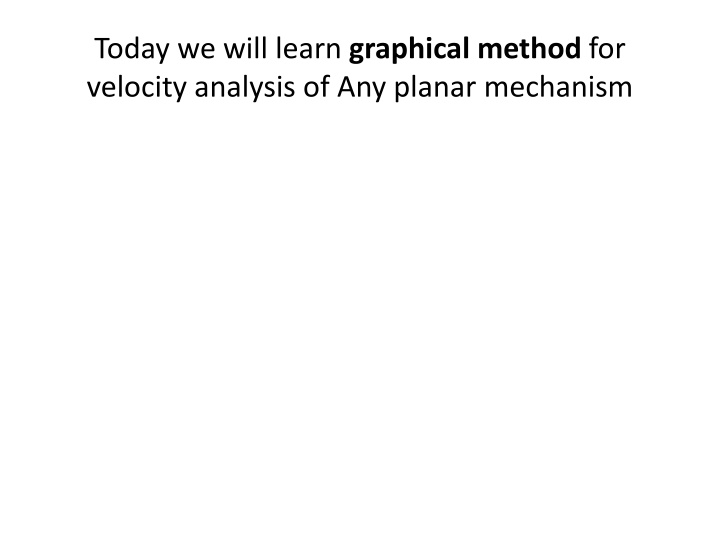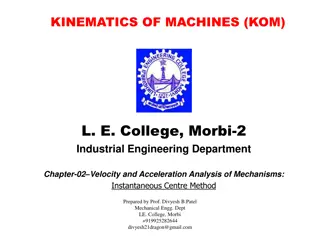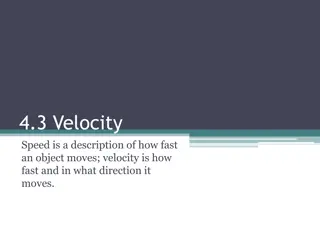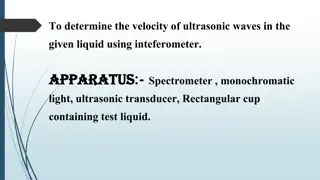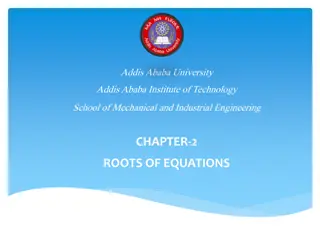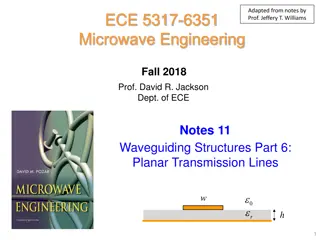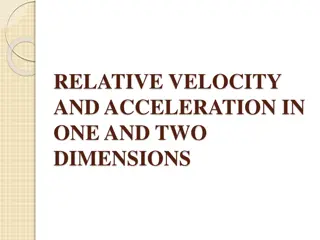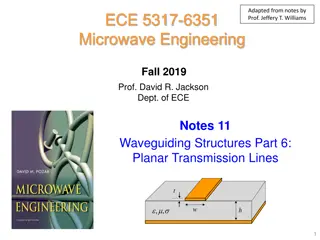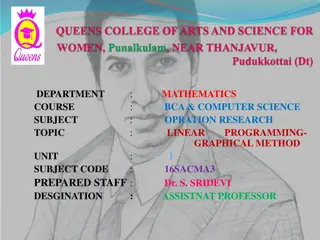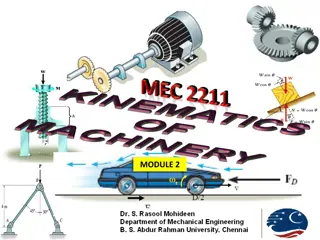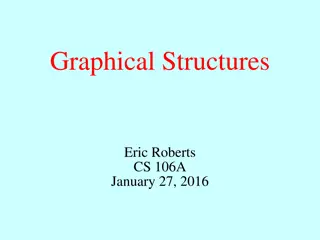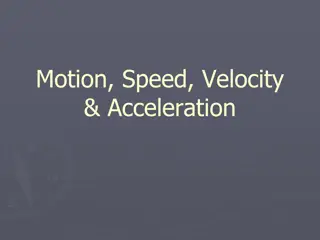Graphical Method for Velocity Analysis of Planar Mechanisms
Learn about the graphical method for velocity analysis of planar mechanisms through practice problems involving slider-crank mechanisms and link velocities. Understand how to calculate slider velocity, point velocity, and angular velocities using the given dimensions and rotational speeds. Visualize the analysis through graphical representations to enhance understanding of mechanical motion.
Download Presentation

Please find below an Image/Link to download the presentation.
The content on the website is provided AS IS for your information and personal use only. It may not be sold, licensed, or shared on other websites without obtaining consent from the author.If you encounter any issues during the download, it is possible that the publisher has removed the file from their server.
You are allowed to download the files provided on this website for personal or commercial use, subject to the condition that they are used lawfully. All files are the property of their respective owners.
The content on the website is provided AS IS for your information and personal use only. It may not be sold, licensed, or shared on other websites without obtaining consent from the author.
E N D
Presentation Transcript
Today we will learn graphical method for velocity analysis of Any planar mechanism
Practice problem -1: In a slider crank mechanism, the crank is 480 mm long and rotates at 20 rad/s in the counter-clockwise direction. The length of the connecting rod is 1.6 m. When the Crank turns 600 from the inner-dead centre, determine the (i) Velocity of the slider (answer : 9.7 m/s) (ii) Velocity of a point E located at a distance 450 mm on the connecting rod extended (answer : 10.2 m/s) (iii) Angular velocity of the connecting rod (answer: 3.28 rad/s clockwise)
Velocity of A = angular velocity of OA x OA = 20 rad/s x 0.48 m =9.6 m/s VB/A We will define a scale: 9.6 m/s = 5 cm a 5 cm ab = y VB/A 1500 b Vb O Ob = x Velocity of B = (9.6 /5 ) *x Velocity of B with respect to A = (9.6 /5 ) *y Angular speed of AB =( relative velocity of B/A )/ AB
Practice problem -2: A mechanism in which OA = QC = 100 mm, AB = QB = 300 mm and CD = 250 mm. The crank OA rotates at 150 rpm in the clockwise direction. Determine the (i) Velocity of the slider at D (vD = 0.56 m/s) (ii) Angular velocities of links QB and AB ( bq = 5.63 rad/s, AB = 6.3 rad/s)
Practice problem -2: A mechanism in which OA = QC = 100 mm, AB = QB = 300 mm and CD = 250 mm. The crank OA rotates at 150 rpm in the clockwise direction. Determine the (i) Velocity of the slider at D (vD = 0.56 m/s) (ii) Angular velocities of links QB and AB ( bq = 5.63 rad/s, AB = 6.3 rad/s) VB/A a 5 cm 1250 y 5 cm = 1.571 m/s (o , q, g) x 1 cm = (1.571 /5) m/s b x cm = (1.571 /5) * x m/s y cm = (1.571 /5) * y m/s Relative velocity of B with respect to A. Relative velocity of B with respect to A.
Practice problem -2: A mechanism in which OA = QC = 100 mm, AB = QB = 300 mm and CD = 250 mm. The crank OA rotates at 150 rpm in the clockwise direction. Determine the (i) Velocity of the slider at D (vD = 0.56 m/s) (ii) Angular velocities of links QB and AB ( bq = 5.63 rad/s, AB = 6.3 rad/s) VB/A a 5 cm 1250 Anugular speed of AB = ab / AB =( ab / 0.3) rad/s (o , q, g) x b Anugular speed of BQ = velocity of B / BQ =
